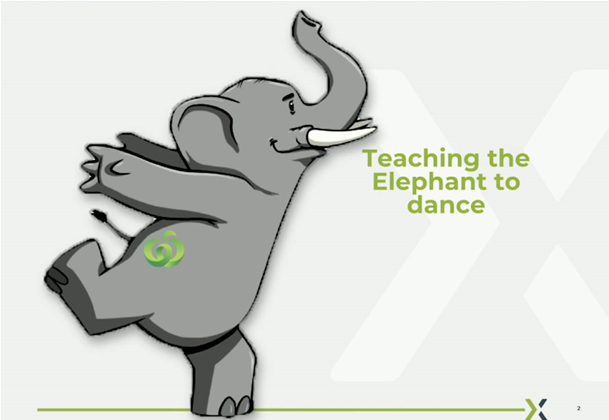Woolworths is treating its nascent digital arm WooliesX as a “cool uncle”, albeit one that has had to prove its financial worth to the parent company from day one.

Though largely under wraps since details of the venture leaked out in mid-2017, WooliesX is starting to find its voice and has made its first public outing.
Woolworths Group’s general manager of digital transformation and agile, Jason Hair, told a recent conference that while WooliesX is an innovation arm that physically sits away from head office, it was set up with strict rules around its operations.
“I want to be really clear - WooliesX is not a ‘labs’,” Hair said.
“It’s not an adjunct of an organisation which sits in a garage with some funding and is allowed to do innovative and creative stuff.
“From day one, it had to have a P&L and it had to contribute to the business because if it didn’t, it didn’t have buy-in from the [parent group]. We gave all our online businesses to WooliesX so from day one it had big meaty P&L and even bigger ambitions and aspirations to grow that.”
Hair said that Woolworths treated WooliesX as its “cool uncle”.
“This is another term we use,” Hair said.
“You don’t think of Woolworths and think of cool - well I do now - and as an innovator. This was about how we take key ingredients from the parent and make something cool on the side, and that’s what we did.”
In setting up WooliesX in Surry Hills - a decision partly taken to attract talent that may not otherwise want to travel out to Woolworths’ HQ in Bella Vista in Sydney’s north-west - Hair said Woolworths still wanted Woolies X to “associate with the parent in Bella Vista”.
Agile testbed
WooliesX is known to be involved in a number of interesting projects, including scan-and-go smartphone shopping trials and a range of machine learning initiatives which are mostly still being discussed out of public sight.
However, what perhaps wasn’t clear at the outset was the role WooliesX was set up to play in transforming ways of working across the Woolworths Group.
Hair said that Woolworths CEO Brad Banducci wanted to “teach the elephant to dance” - a reference to James Belasco’s 1990 change management book (as well as to the 2003 version of how IBM implemented it).
At Banducci’s suggestion, Hair “spent a whole weekend reading”, since it was a strategy the CEO wanted to implement at Woolworths.
“If you think of Woolworths, it’s a 94 year old elephant and we’re trying to teach it to dance,” Hair said.
While “traditionally you would try to tackle the elephant head on and try to teach it to dance,” he continued, Woolworths decided on a different strategy: using a “mouse” in the form of WooliesX to do the teaching.
One reason for that was that head-on approaches to change had all failed in the past.
“Previously at Woolies, we’ve tried lots of organisational change imperatives and initiatives,” Hair said.
“We’ve gone through LEAN and agile before, we’ve got ITIL in IT … we’ve got all sorts of pockets, but one fundamental commonality between all those things is that they failed.”
One reason they failed, according to Hair, is that they all focused on process.
“This is the first time on a large scale that we’re looking at cultural transformation,” he said of the WooliesX establishment.
“It’s actually not so much about the tool of agile or whatever it is you’re using for process re-engineering. It’s all about cultural transformation.”
Prior change strategies had also failed because they were largely not business-led.
“We had practitioners of the practices trying to embed the change, so they failed because people who were adopting the change couldn’t relate to the people selling them the change,” Hair said.
“What we changed this time was we got business practitioners - people who led businesses - to be the spokespeople for the change and that has caught on like wildfire in the organisation because I can relate to you, you run a P&L and have the same operational issues as I do, so this new way of working must resonate because you’ve got skin in the game.
“So a key learning for us is people within the business need to be the ones talking about the change they’re embedding.”
Though it had tried seeding agile before, WooliesX is seen as the vehicle that will help drive agile properly throughout the group.
Like others, WooliesX uses the tribal agile model pioneered by Spotify, though Hair notes the company has “Woolified” it somewhat to suit the retailer’s own purposes.
One of the challenges in shifting even a small part of Woolworths to agile has been in “teaching leaders the new ways of leading - what it means to have self-managed autonomous teams, relinquish control and trust,” Hair said.
Key learnings from WooliesX as a testbed for agile were being drawn out in a review process as of late September.
“We are now stopping and pausing - it’s 12 months into our tribal movement, and we’re course-correcting and seeing if we have to re-tribe,” Hair said. “It feels about the right time we should possibly look at the tribal structure again.”
Hair said that Woolworths is also taking some of its cues from the big four bank ANZ, which is further down an organisational-wide agile transformation.
“We’re gleaning a lot of insights actually from ANZ,” he said.
That insight will help Woolworths grow agile out of WooliesX and drive it across the organisation, which is set to be a major goal into 2019.
“We’re moving to an agile organisation across the group. We have a two-speed economy within Woolworths - we’ve got agile delivery which is WooliesX and now we’ve got agile organisation,” Hair said.


.png&h=140&w=231&c=1&s=0)
_(20).jpg&h=140&w=231&c=1&s=0)
_(22).jpg&h=140&w=231&c=1&s=0)






 iTnews Executive Retreat - Security Leaders Edition
iTnews Executive Retreat - Security Leaders Edition












_(1).jpg&h=140&w=231&c=1&s=0)



